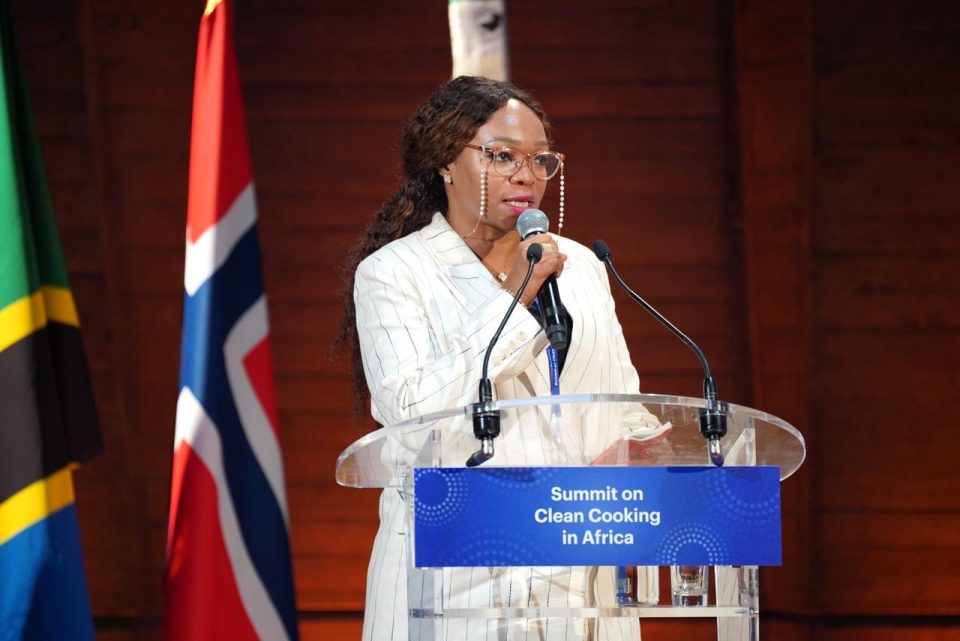Photo caption: Head, Business Development (Gas), Sahara Group, Ijeoma Isichei, making her presentation.
By Emeka Ugwuanyi
Leading sustainable energy and infrastructure conglomerate, Sahara Group, has emphasized the need for infrastructure development and collaboration among all stakeholders to accelerate accessibility, affordability, and adoption of clean cooking solutions in Africa.
Speaking in Paris, at the Summit on Clean Cooking in Africa, organised by the International Energy Agency (IEA), Head, Business Development (Gas), Sahara Group, Ijeoma Isichei described the dearth of adequate infrastructure for cooking gas as the most daunting challenge to ramping up clean cooking across Africa. “I believe that opportunity lies in the greatest challenge,” she stated, advocating more investment in this regard, through industry-led expansion programs, support from developed economies, and well-established public-private-partnerships, among others.
Cooking gas, also known as Liquefied petroleum gas (LPG), is widely regarded as an efficient and clean-burning cooking fuel used by almost three billion people. There is limited storage infrastructure to support the growing demand for LPG in Africa, making the region reliant on imports and shipping.
Isichei, who is also a senior management staff at WAGL Energy Limited (An NNPC Limited and Sahara Energy JV) said PPPs and alignment of LPG policies across the continent would further enhance access, affordability, and environmental sustainability. She also called for more LPG advocacy platforms that would serve as a meeting point for governments, the private sector, and international organizations to give traction to global clean cooking solutions. “I propose more public and private partnerships. A clear example would the partnership between Sahara Group and Petroci, the Côte d’Ivoire National Oil and Gas company towards the construction of 12,000MT LPG storage facilities in Côte d’Ivoire. All of this is being achieved with collaborations across the government and private sectors, with support from development agencies, WAGL and the NNPC.”
She stated that Sahara Group, through affiliations, provides access to LPG in Africa through its fleet of LPG vessels with combined capacity of 120,000cbm, whilst also working towards ramping up its LPG storage capacity to almost 100,000MT across Africa. Sahara Group’s LPG footprint also covers Asia, North and South America, she noted.
CITAC estimates that by 2035 the demand for LPG in the Sub-Saharan region would almost triple, compared to current levels. According to the World Bank, regional economic blocs on the continent have set ambitious targets for LPG penetration and consumption to drive almost exclusive LPG deployment for cooking by 2030.
“To meet the growing demand, Africa would require sustainable investments in infrastructure to adequately cover import, bulk storage, transportation, filling facilities, LPG cylinders, seamless distribution, and retailing. Apart from providing a clean solution for cooking, this will help us advance towards a healthier Africa where currently, according to IEA estimates, wood and charcoal represent the primary cooking fuels of 1 billion people in Africa,” Isichei stated.
She added that multi-stakeholder collaboration would also help improve awareness and LPG adoption as against biomass and kerosene and accelerate alignment of policies required to make LPG production, storage, transportation, and distribution seamless across Africa.




